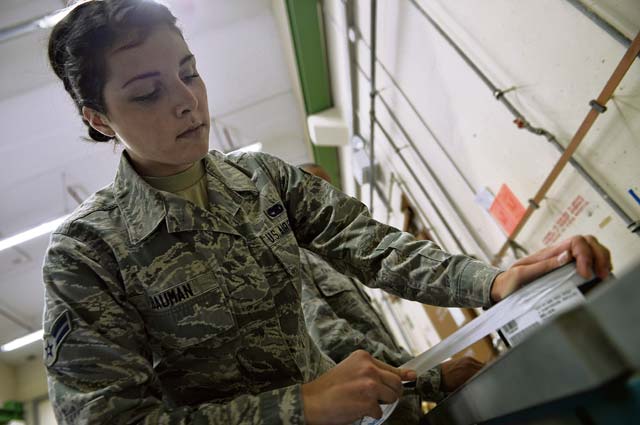
One of the differences between commercial aircraft and an Air Force aircraft is munitions. Without defensive munitions, flying units would be vulnerable to enemies when providing critical support to ground units.
The 86th Munitions Squadron supports U.S. Air Forces in Europe and three combatant commands by acting as a supply depot, housing munitions that get shipped to support worldwide operations. They also build, test, inspect and supply weapons and ammunition.
“We handle delivering munitions to combatant commands for air-to-air support or air-to-ground support depending upon the mission,” said Master Sgt. Raymond Lego, 86th MUNS senior inspector and munitions inspection NCO in charge. “Ramstein’s ammo mission is the delivery of countermeasures to (C-130J Super Hercules) and (C-20Hs, C-21s, C-37s and C-40Bs) for operational and training use.”
Chaff and flares are countermeasures these MUNS Airmen supply the C-130J with to disrupt an adversary’s attack. Chaff is a dispensing system that spreads tiny pieces of metal in the air to misguide projectiles away from an aircraft. A flare is a decoy that creates heat to distract heat-seeking missiles.
“It’s basically a tool that deploys a decoy to divert an attack if a C-130 is getting shot at,” said Senior
Airman Richard Taylor, 86th MUNS conventional maintenance crew chief.
After everything is marked and logged into a computer, it takes three to four Airmen about two and a half hours to build one load of 420 countermeasures, which supports one C-130.
Additionally, it takes about 30 to 40 minutes to load chaff and flares onto a C-130.
A safety measure during chaff and flare operations includes MUNS Airmen remaining grounded while handling the electrically initiated “squibs” or countermeasures they’re installing. All explosive tasks require a minimum of two people to ensure the tasks gets accomplished safely. The Airmen follow guidance from step-by-step procedures, derived from squadron and local operating instructions and Air Force technical order data.
Although munitions can be used offensively for operations downrange, 86th MUNS Airmen keep countermeasures readily available for transport and dissemination in support of worldwide combat operations.


